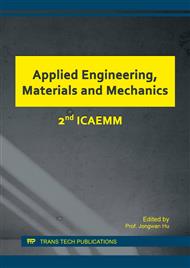p.155
p.160
p.165
p.173
p.178
p.185
p.192
p.198
p.204
Copper Doping TiO2 Nanotube Arrays Loaded with Hydrophilic and Hydrophobic Drugs and its Release
Abstract:
In this work, vertically aligned titania nanotube arrays (TNTs) were fabricated on Ti surface in fluoride-containing electrolytes by anodization. TNTs were treated by hydrothermal treatment in the saturated solution of [Cu(NH3)4 (H2O)2]2+. Different hydrothermal treatment conditions were studied to obtain the best modification effect in the experiment. The TNTs were loaded with alendronate and ibuprofen via vacuum drying method and the release properties from the nanotubes were detected in phosphate buffer solution (PBS). The samples were characterized by field emission scanning electron microscopy, X-ray diffraction, and UV-Vis spectrophotometer. The data show that copper is successfully doped to the nanotube surface by hydrothermal treatment, and the optimum hydrothermal treatment conditions are 200°C, 0.5h. The drug loading capacity of the modified sample increased obviously, whether it was hydrophilic or hydrophobic. Meanwhile, the modified nanotubes release more slowly in the later stage. This approach provides an alternative to tailor the surface of TNTs and offer considerable propects for diverse biomedical applications.
Info:
Periodical:
Pages:
178-182
Citation:
Online since:
October 2017
Authors:
Keywords:
Price:
Сopyright:
© 2017 Trans Tech Publications Ltd. All Rights Reserved
Share:
Citation:


